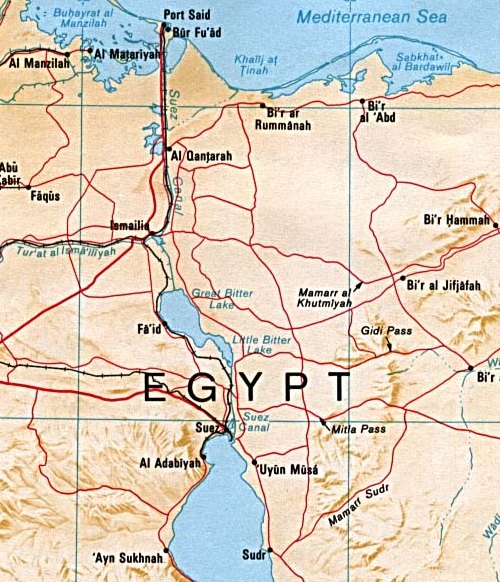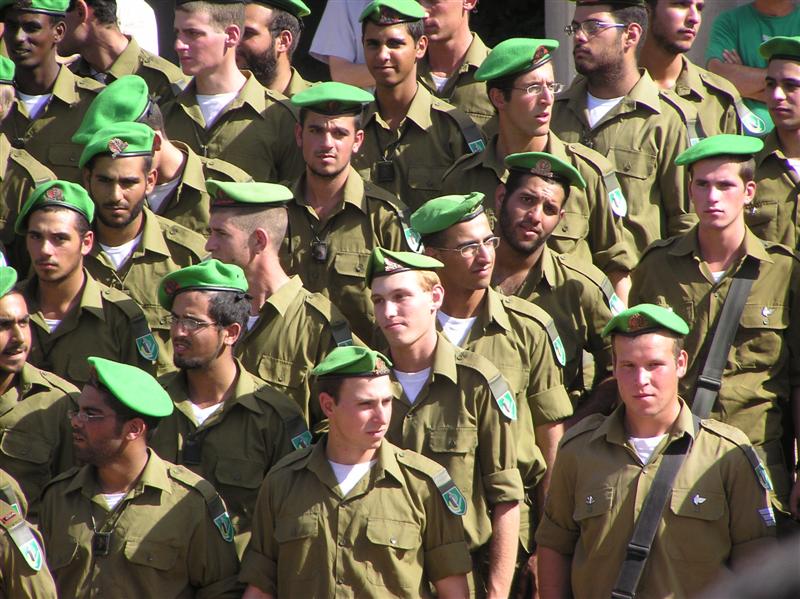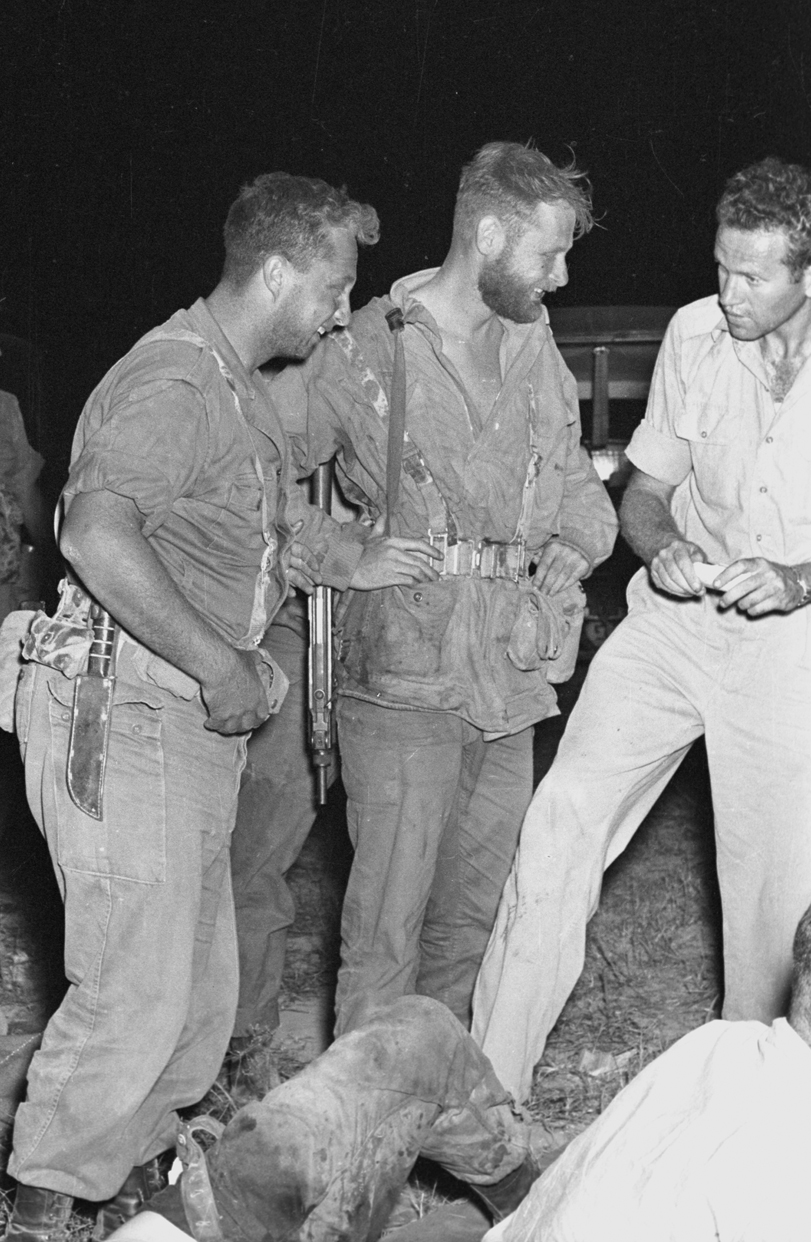|
Amnon Lipkin-Shahak
Amnon Lipkin-Shahak ( he, אמנון ליפקין-שחק; March 18, 1944 – December 19, 2012) was an Israeli military officer and politician. He served as Chief of Staff of the Israel Defense Forces, as a Member of the Knesset, and as Minister of Transportation and Minister of Tourism. Biography Lipkin-Shahak was the great-grandson of Yitzhak Lipkin, an early pioneer to Palestine and businessman who financed the construction of the Ohel Shlomo and Shaarei Yerushalayim courtyard neighborhoods on Jaffa Road in Jerusalem at the end of the 19th century. Lipkin-Shahak, born in Tel Aviv, was the third son of Zvi and Sarah, and brother to Yaacov and Tamar. He was married to journalist Tali Lipkin-Shahak and had five children. He earned a B.A. in general history from Tel Aviv University. In 1994, while serving as Deputy Chief of Staff, he said in an interview that four years earlier he was diagnosed with leukemia, but had since recovered. When it was discovered he had been serving as Di ... [...More Info...] [...Related Items...] OR: [Wikipedia] [Google] [Baidu] |
Tel Aviv
Tel Aviv-Yafo ( he, תֵּל־אָבִיב-יָפוֹ, translit=Tēl-ʾĀvīv-Yāfō ; ar, تَلّ أَبِيب – يَافَا, translit=Tall ʾAbīb-Yāfā, links=no), often referred to as just Tel Aviv, is the most populous city in the Gush Dan metropolitan area of Israel. Located on the Israeli coastal plain, Israeli Mediterranean coastline and with a population of , it is the Economy of Israel, economic and Technology of Israel, technological center of the country. If East Jerusalem is considered part of Israel, Tel Aviv is the country's second most populous city after Jerusalem; if not, Tel Aviv is the most populous city ahead of West Jerusalem. Tel Aviv is governed by the Tel Aviv-Yafo Municipality, headed by Mayor Ron Huldai, and is home to many List of diplomatic missions in Israel, foreign embassies. It is a Global city, beta+ world city and is ranked 57th in the 2022 Global Financial Centres Index. Tel Aviv has the List of cities by GDP, third- or fourth-largest e ... [...More Info...] [...Related Items...] OR: [Wikipedia] [Google] [Baidu] |
Israel Defense Forces
The Israel Defense Forces (IDF; he, צְבָא הַהֲגָנָה לְיִשְׂרָאֵל , ), alternatively referred to by the Hebrew-language acronym (), is the national military of the Israel, State of Israel. It consists of three service branches: the Israeli Ground Forces, the Israeli Air Force, and the Israeli Navy. It is the sole military wing of the Israeli security forces, Israeli security apparatus, and has no civilian jurisdiction within Israel. The IDF is headed by the Chief of the General Staff (Israel), Chief of the General Staff, who is subordinate to the Ministry of Defense (Israel), Israeli Defense Minister. On the orders of David Ben-Gurion, the IDF was formed on 26 May 1948 and began to operate as a Conscription in Israel, conscript military, drawing its initial recruits from the already-existing paramilitaries of the Yishuv—namely Haganah, the Irgun, and Lehi (militant group), Lehi. Since its formation shortly after the Israeli Declaration of Independen ... [...More Info...] [...Related Items...] OR: [Wikipedia] [Google] [Baidu] |
War Of Attrition
The War of Attrition ( ar, حرب الاستنزاف, Ḥarb al-Istinzāf; he, מלחמת ההתשה, Milhemet haHatashah) involved fighting between Israel and Egypt, Jordan, the Palestine Liberation Organisation (PLO) and their allies from 1967 to 1970. Following the 1967 Six-Day War, no serious diplomatic efforts tried to resolve the issues at the heart of the Arab–Israeli conflict. The 1967 Arab League summit formulated in September the " three no's" policy: barring peace, recognition or negotiations with Israel. The Egyptian President Gamal Abdel Nasser believed that only military initiative would compel Israel or the international community to facilitate a full Israeli withdrawal from Sinai, and hostilities soon resumed along the Suez Canal. These initially took the form of limited artillery duels and small-scale incursions into Sinai, but by 1969, the Egyptian Army judged itself prepared for larger-scale operations. On March 8, 1969, Nasser proclaimed the official ... [...More Info...] [...Related Items...] OR: [Wikipedia] [Google] [Baidu] |
Operation Inferno
The Battle of Karameh ( ar, معركة الكرامة) was a 15-hour military engagement between the Israel Defense Forces (IDF) and combined forces of the Palestine Liberation Organization (PLO) and the Jordanian Armed Forces (JAF) in the Jordanian town of Karameh on 21 March 1968, during the War of Attrition. It was planned by Israel as one of two concurrent raids on PLO camps, one in Karameh and one in the distant village of Safi—codenamed Operation Inferno ( he, מבצע תופת) and Operation Asuta (מבצע אסותא), respectively—but the former turned into a full-scale battle. After Jordan lost control of the West Bank to Israel in 1967, Palestinian fighters known as fedayeen moved their bases to Jordan and stepped up their attacks on Israel and Israeli-occupied territories, taking the border town of Karameh as their headquarters. The IDF claimed that the purpose was to destroy the fedayeen camps at Karameh, and to capture Yasser Arafat, the leader of the PLO as r ... [...More Info...] [...Related Items...] OR: [Wikipedia] [Google] [Baidu] |
Six-Day War
The Six-Day War (, ; ar, النكسة, , or ) or June War, also known as the 1967 Arab–Israeli War or Third Arab–Israeli War, was fought between Israel and a coalition of Arab world, Arab states (primarily United Arab Republic, Egypt, Syria, and Jordan) from 5 to 10 June 1967. Escalated hostilities broke out amid poor relations between Israel and its Arab neighbours following the 1949 Armistice Agreements, which were signed at the end of the 1948 Arab–Israeli War, First Arab–Israeli War. Earlier, in 1956, regional tensions over the Straits of Tiran escalated in what became known as the Suez Crisis, when Israel invaded Egypt over the Israeli passage through the Suez Canal and Straits of Tiran, Egyptian closure of maritime passageways to Israeli shipping, ultimately resulting in the re-opening of the Straits of Tiran to Israel as well as the deployment of the United Nations Emergency Force (UNEF) along the Borders of Israel#Border with Egypt, Egypt–Israel border. In ... [...More Info...] [...Related Items...] OR: [Wikipedia] [Google] [Baidu] |
Chief Of General Staff (Israel)
The Chief of the General Staff, also known as the Commander-in-Chief of the Israel Defense Forces (, abbreviated ''Ramatkal''—), is the supreme commander and head of the Israel Defense Forces. The current Chief of the General Staff is Aviv Kochavi. At any given time, the Chief of the General Staff is the only active officer holding the IDF's highest rank, ''rav aluf'' (), which is usually translated into English as lieutenant general, a three-star rank. The only exception to this rule occurred during the Yom Kippur War, when former Chief of the General Staff Haim Bar-Lev, who was a cabinet member at the outbreak of and during the war, was brought out of retirement and installed as chief of Southern Command. For a brief period, he and Chief of the General Staff David Elazar were both in active service with the rank of ''rav aluf''. History The role of the Chief of the General Staff began with the Haganah organization, where it was named after the head of the general staff of ... [...More Info...] [...Related Items...] OR: [Wikipedia] [Google] [Baidu] |
Aman (IDF)
The Israeli Military Intelligence ( he, אגף המודיעין; ''Agaf HaModi'in''; lit. "the Intelligence Section"), often abbreviated to Aman ( he, אמ״ן), is the central, overarching military intelligence body of the Israel Defense Forces. Aman was created in 1950, when the Intelligence Department was spun off from the IDF's General Staff (the Intelligence Department itself was composed largely of former members of the Haganah Intelligence Service). Aman is an independent service, and not part of the ground forces, Navy or the Air Force. It is one of the main entities (and the largest component) of the Israeli Intelligence Community, along with Mossad and Shin Bet. It is currently headed by Major General Aharon Haliva. It includes the cyber warfare branch Unit 8200, the secret technology Unit 81, and the training course Havatzalot Program. Its special operations unit is General Staff Reconnaissance Unit (Sayeret Matkal). Roles and jurisdiction The IDF's Intelligence ... [...More Info...] [...Related Items...] OR: [Wikipedia] [Google] [Baidu] |
Steel Formation
The Israel Defense Forces 162nd Armor Division, also known as the Steel Formation ( he, עֻצְבַּת הַפְּלָדָה, ''Utzbat HaPlada''), is a regular-service armor division in the IDF. It is subordinate to the Southern Regional Command. The division is led by Brigadier-General Moti Baruch. It played a critical role in the 1973 Yom Kippur War in the Sinai under Abraham Adan. Although attached to the Central Command at the time, the 162nd Division participated in battles against Hezbollah, from July to August 2006, in the western sector of southern Lebanon and north of Bint Jbail Bint Jbeil () is the second largest town in the Nabatiye Governorate in Southern Lebanon. The town has an estimated population of 30,000. Its exact population is unknown, because Lebanon has not conducted a population census since 1932. Histo .... The division reached the strategic Litani River, that separates Hezbollah-controlled Lebanon from central Lebanon. The division participate ... [...More Info...] [...Related Items...] OR: [Wikipedia] [Google] [Baidu] |
Nahal Infantry Brigade
The 933rd "Nahal" Brigade is one of the Israel Defense Forces main infantry brigades. From August 2019 to June 2021, the brigade was led by . On June 28, was appointed as the new commander. However, three days later, on July 1, Asman suddenly died during morning training. As a result, Shomer was issued command again until a permanent replacement could be found. History It was established as a separate brigade in 1982, in response to the growing need for infantry manpower, before the 1982 Lebanon War. Its 50th battalion was originally part of the Paratrooper Brigade in the 1950s. It is formed mainly from regular draftees, as well as from a core of soldiers from the Nahal group, part of the Nahal movement, which combines social volunteerism, agriculture (historically the establishment of kibbutz farming communities) and military service. Many Mahal foreign volunteers are also known to serve in the Nahal Brigade, providing a highly motivated and disciplined core of soldiers for t ... [...More Info...] [...Related Items...] OR: [Wikipedia] [Google] [Baidu] |
Sayeret
Special forces units in the Israel Defense Forces encompass a broad definition of specialist units. Such units are usually a regiment or a battalion in strength. Sayeret ( he, סיירת, Plural, pl.: ''sayarot''), or ''reconnaissance'' Military unit, units in the Israel Defense Forces (IDF) nomenclature, specialize in intelligence gathering and surveillance. In practice, these units specialize in commando and other special forces roles, in addition to reconnaissance (the degree of specialization varies by units and current needs). Mista'arvim ( he, מסתערבים, ''lit.'' Arabized; ar, مستعربين, ''Musta'arabin''), also spelled as mistaravim, are counter-terrorism units in whose members are specifically trained to operate undercover, in enemy territory, in order to assassinate or capture wanted targets. Special forces units in the IDF Unit 101 Commando Unit 101, the founding Israeli special forces unit, was established and commanded by Ariel Sharon on orders ... [...More Info...] [...Related Items...] OR: [Wikipedia] [Google] [Baidu] |
Israeli Central Command
The Central Command ( he, פיקוד מרכז, ''Pikud Merkaz''), often abbreviated to Pakmaz (פקמ"ז), is a regional command of the Israel Defense Forces. It is responsible for the units and brigades located in the West Bank (under the West Bank Division), Jerusalem, the Sharon, Gush Dan, and the Shephelah. The commander (Aluf) of the central command is the one who is authorized to declare new cities in the Judea and Samaria Area. History During the 1948 Arab–Israeli War, the Central Command was in-charge of the war efforts against Jordan, particularly on the road to Jerusalem, occupying the "Small Triangle" (east Sharon), Lod, and Ramla. During the Six-Day War, the Command led the occupation of the West Bank from Jordan. As of the First Intifada, the Command primarily engages in security and counter-terrorism activities, as well as more conventional military measures, in the West Bank. Towards the end of 2010 the deployment of IDF troops in and around the West Bank reache ... [...More Info...] [...Related Items...] OR: [Wikipedia] [Google] [Baidu] |
Paratroopers Brigade
The 35th Brigade ( he, חֲטִיבַת הַצַּנְחָנִים, ''Hativat HaTzanhanim''), also known as the Paratroopers Brigade, is an infantry brigade unit of paratroopers within the Israel Defense Forces (IDF), and forms a major part of the Infantry Corps. It has a history of carrying out special forces-style missions dating back to the 1950s. Paratrooper Brigade soldiers wear maroon berets with the infantry pin and reddish-brown boots. Distinct from all other soldiers of the IDF, Paratroopers wear a tunic and belt over the shirt. The IDF has four reservist paratrooper brigades ( 55th, 226th, 551st and 646th) at any given time, consisting of personnel who served their mandatory time in the brigade, and who are mostly relatively recently discharged, aside from officers. History In 1949 Chaim Laskov asked Machalnik Captain Tom Derek Bowden to create a paratroop school. He did so, writing a training manual with the help of his Hebrew-speaking secretary Eva Heilbronner ... [...More Info...] [...Related Items...] OR: [Wikipedia] [Google] [Baidu] |





